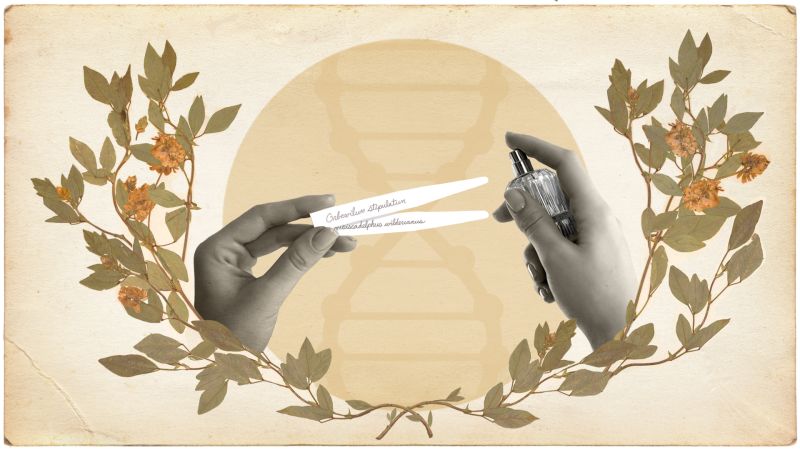
This fragrance company is trying to recreate the scent of extinct blooms
CNN
A US-based biotech company has successfully sequenced the genetic codes of preserved plants, some of which date back more than 150 years. Six of them have been made into perfumes.
What do you get when you combine a team of scientists, a lab specializing in sequencing DNA and some extinct species? While the answer could be the plot of “Jurassic Park,” these are actually the foundations of Future Society, a biotech fragrance company that has changed the landscape of scent by conjuring extinct flowers. Working with the Harvard University Herbaria — home to over five million botanical specimens — and biotech firm Ginkgo Bioworks, Future Society has successfully sequenced the DNA of preserved plants, some of which date back more than 150 years. Six of them have already been made into perfumes, with signature notes ranging from woody to floral. Take the orbexilum stipulatum, a herbaceous, flowering plant that grew on Rock Island in the shallowest part of the old Falls of the Ohio and is last known to have flowered in 1881. The plant is thought to have been wiped out after the eradication of buffalo that used to migrate through the area, meaning its seeds were no longer dispersed far and wide. Then in the 1920s, the entire area was flooded by dams, submerging all hope for it. “We set out to make scents we’ve never smelled before and fragrances that were previously not possible to make,” said Jasmina Aganovic, founder and CEO of Future Society and its parent company Arcaea, in a video interview with CNN. “It’s similar (to the) technology that was used on ancestry.com and 23andme whereby users spit into a tube, send it away and wait to find out about their genetics,” Aganovic explained. “We used this technology on preserved plant specimens from extinct flowers, searching for scent molecules which started to provide a glimpse into what these extinct flowers might have smelled like.” Aganovic didn’t set out with a grand plan for a certain flower she was desperate to smell, but wanted to demonstrate how new biological advancements could be used in the beauty sector.












